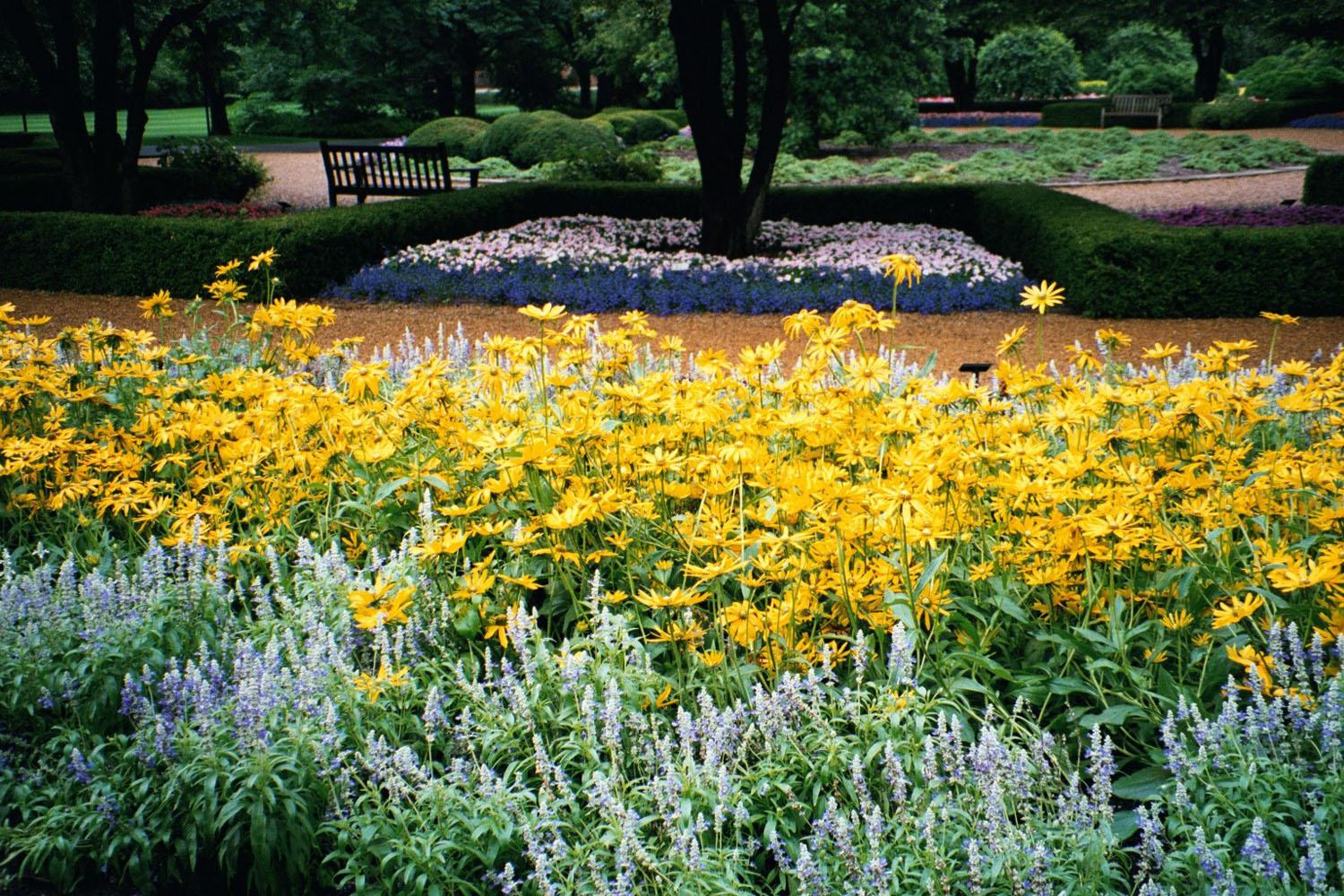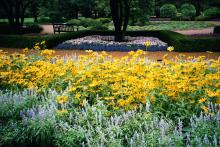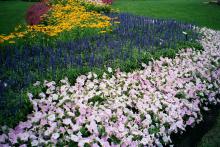Information Possibly Outdated
The information presented on this page was originally released on February 12, 2004. It may not be outdated, but please search our site for more current information. If you plan to quote or reference this information in a publication, please check with the Extension specialist or author before proceeding.
Choose Mealy-cup Sage for perennial plantings
By Norman Winter
MSU Horticulturist
Central Mississippi Research & Extension Center
Victoria Blue, a 1998 Mississippi Medallion award winner, has always been one of my favorite varieties of Salvia farinacea, or mealy-cup sage, but there are certainly some other selections worthy of a prime spot in the landscape.
If you are stuck on round flowers in the garden, it's time to incorporate some spiky textures courtesy of the wonderful selections of Salvia farinacea. Not only will you add excitement with the spiky look, but you will also be inviting a host of bees and butterflies.
The first that everyone should try is Strata, an All-America Selections winnergray and blue as its dominant colors. In fact, if you are a Dallas Cowboys fan, this would be the flower for you.
Strata is every bit the perennial that Victoria is and with its frosty gray and blue-violet, it combines well with a host of other colors from oranges and yellows to pink and whites.
My other favorite selection of Salvia farinacea is called Rhea. Rhea is a darker blue-violet than Victoria and is incredibly showy in combination with yellow or orange flowers.
Select a site in full sun for best flower performance. Fortunately, this salvia is tolerant of wide varieties in soil pH. From this standpoint, anyone can grow it. However, like all salvias in Mississippi, they prefer good drainage, especially if you want a return from winter. For this reason I suggest raised beds loosened with organic matter. Space the plants 12 inches apart and use enough to make a good show. They all grow to about 24 to 36 inches tall by the end of summer.
The mealy-cup sage is native to Texas and Mexico and is fairly drought tolerant. Do pay attention during prolonged dry spells, watering deeply but infrequently. Start feeding with light applications of slow-released fertilizer about every six to eight weeks with the emergence of spring growth. Keep the flowers deadheaded for a tidy appearance and to increase flower production. Because we pay attention and prune mealy-cup sage, it is one of the showiest plants every year at the Fall Flower and Garden Fest in Crystal Springs.
No matter what selection you try, rest assured the mealy-cup sage looks like the poster plant for the cottage garden. Combine them with white picket fences, antique roses and old-fashioned perennials like the Shasta daisy, rudbeckia or purple coneflower. On the other hand, I have seen them in Georgia used boldly with Bengal Tiger canna and Profusion Orange Zinnia for an almost tropical look.
In addition to Rhea, Strata and Victoria, look also for Argent for its unique silver and white colors. Reference is another good variety in a blue and white pattern.
Spring planting isn't quite here, but spring planning is. So get your beds prepared when the soil allows and do plan on using several salvia in your garden, the Mississippi Medallion award winning Victoria as well as some of the other fine selections of one of our best perennials, the Salvia farinacea.




